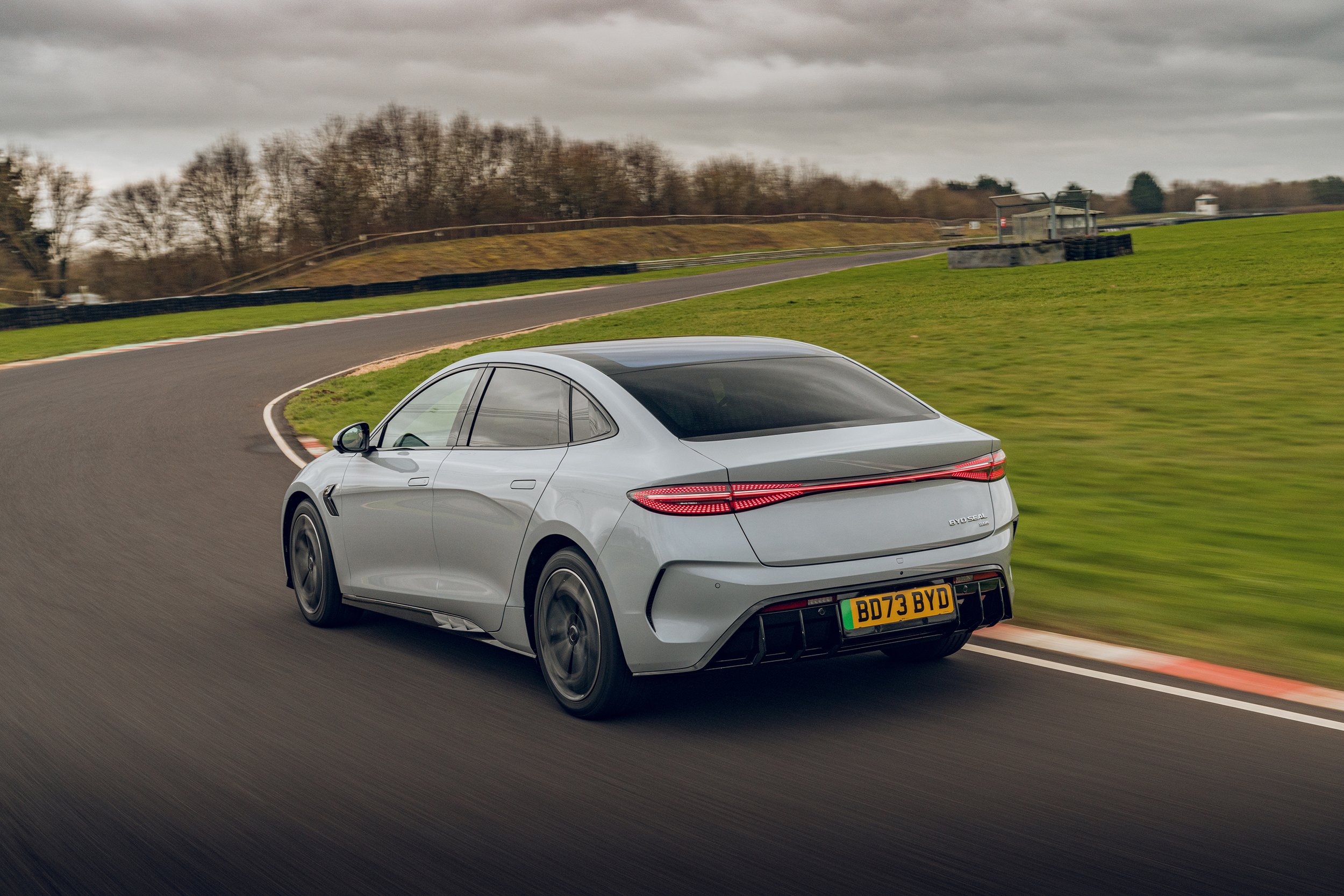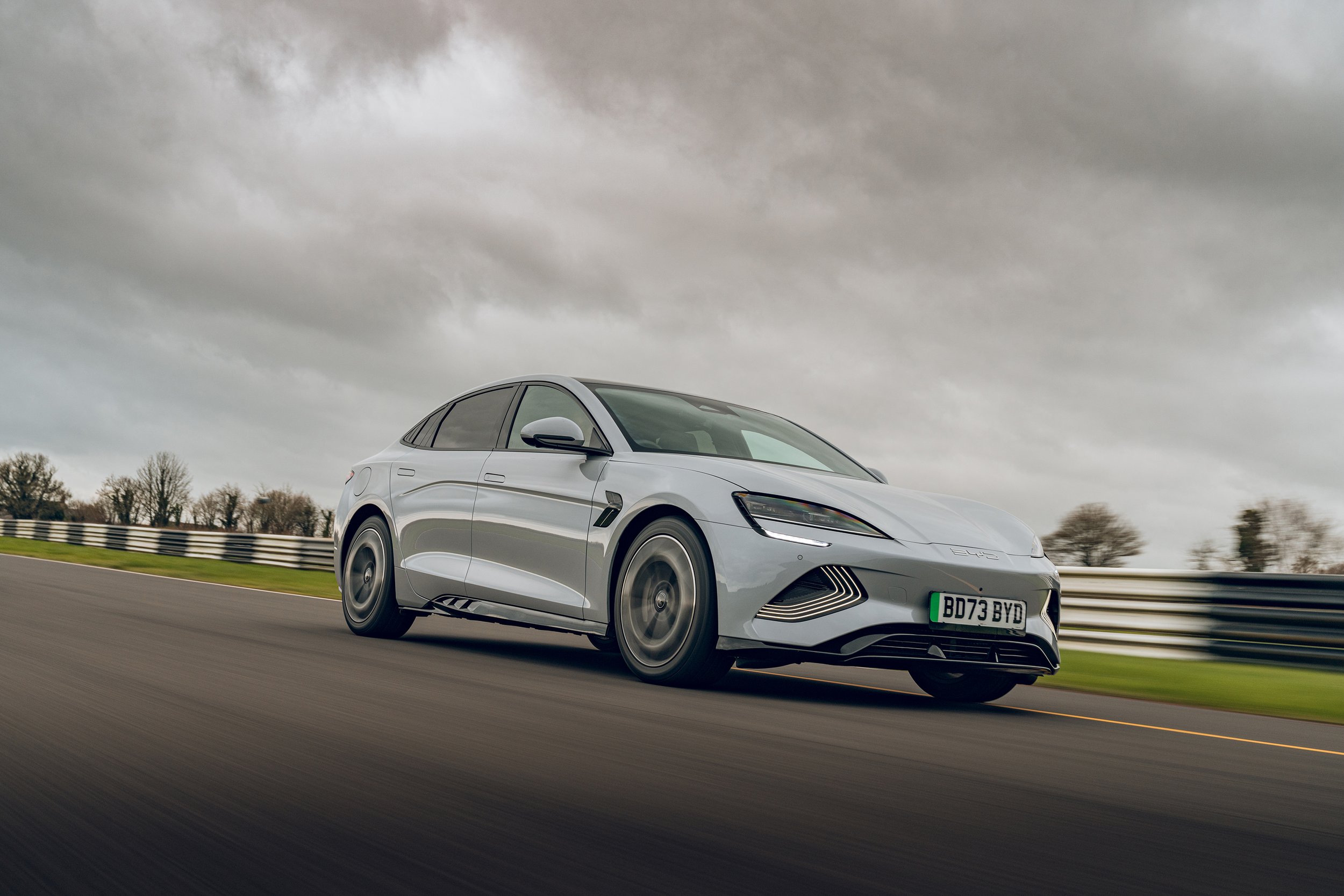
King of the Castle
It’s a Dream Drive all right: Castle Combe’s circuit all to ourselves and a 390kW electric super-saloon to explore
Words Ben Barry | Photography Alex Tapley
Advertising Feature
Formula 1, Formula 5000 and Formula 3 have all raced at Castle Combe since it opened in 1950 and now it’s time for the… one-make BYD Seal time-attack challenge. With its high-speed sweeps and thread-the-needle chicanes, this Wiltshire circuit is a serious challenge for racing cars: could an electric car feel like a fish out of water here, even one BYD bills an ‘all-electric sports saloon’?
We’ve got this former RAF airfield to ourselves to set the series-production electric-car lap record for Castle Combe, with timing experts Racelogic here to record our performance.
And appropriately for an electric lap record, this circuit has a couple of sustainability links of its own. A solar farm way off in the infield feeds clean-green energy to the national grid, while the incredible McMurtry Spéirling single-seater fan car (holder of the Goodwood hillclimb record no less) is one of the circuit’s quickest ever cars in testing here.
I’m more nervous than I expected. It’s not range anxiety: I start with in excess of 300 miles. But the track surface is slick from rainfall first thing, not just slowing potential lap times but also making a heavy impact with the barriers far more likely. It’s also uncertain how much things will improve through the day, because while a strong breeze and reasonable temperatures promise to dry the track out, darker clouds threaten to turn nature’s own sprinklers back on at any minute. We need to pick our moment!
Appropriately for an electric lap record, Castle Combe has a solar farm WAY OFF in the infield
Early sighting laps confirm the 390kW (523bhp) Seal AWD Excellence is effortlessly brisk on the straights, with speed rapidly building if somewhat masked by all-pervading silence, like I’m smashing round in a simulator with the volume turned down.
SEAL AWD TECH HIGHLIGHTS
I’m in Sport mode to pep up throttle response, and initially keep traction control engaged while I feel out the grip levels in these tricky conditions. But it soon transpires the Seal handles pretty deftly thanks to 50:50 weight distribution and the guiding hand of clever electronics. Other highlights include a sophisticated double-wishbone front and a multi-link rear suspension, and the fact that a huge chunk of its near 2.2 tonnes is tucked down low and between the axles to sharpen handling.
Our Excellence model’s standard semi-active suspension also constantly adapts to the road surface, while Intelligent Torque Adaption Control (thankfully iTAC for short) actively juggles the twisting power between wheels, not just reacting to wheel slip but pre-emptively adjusting power to suit driver inputs. In theory it should all help me strike the sweet spot between maximum performance and maximum grip, and everything certainly feels predictably balanced. Confidence up, I switch off traction control to stop it cutting that 390kW at crucial moments.
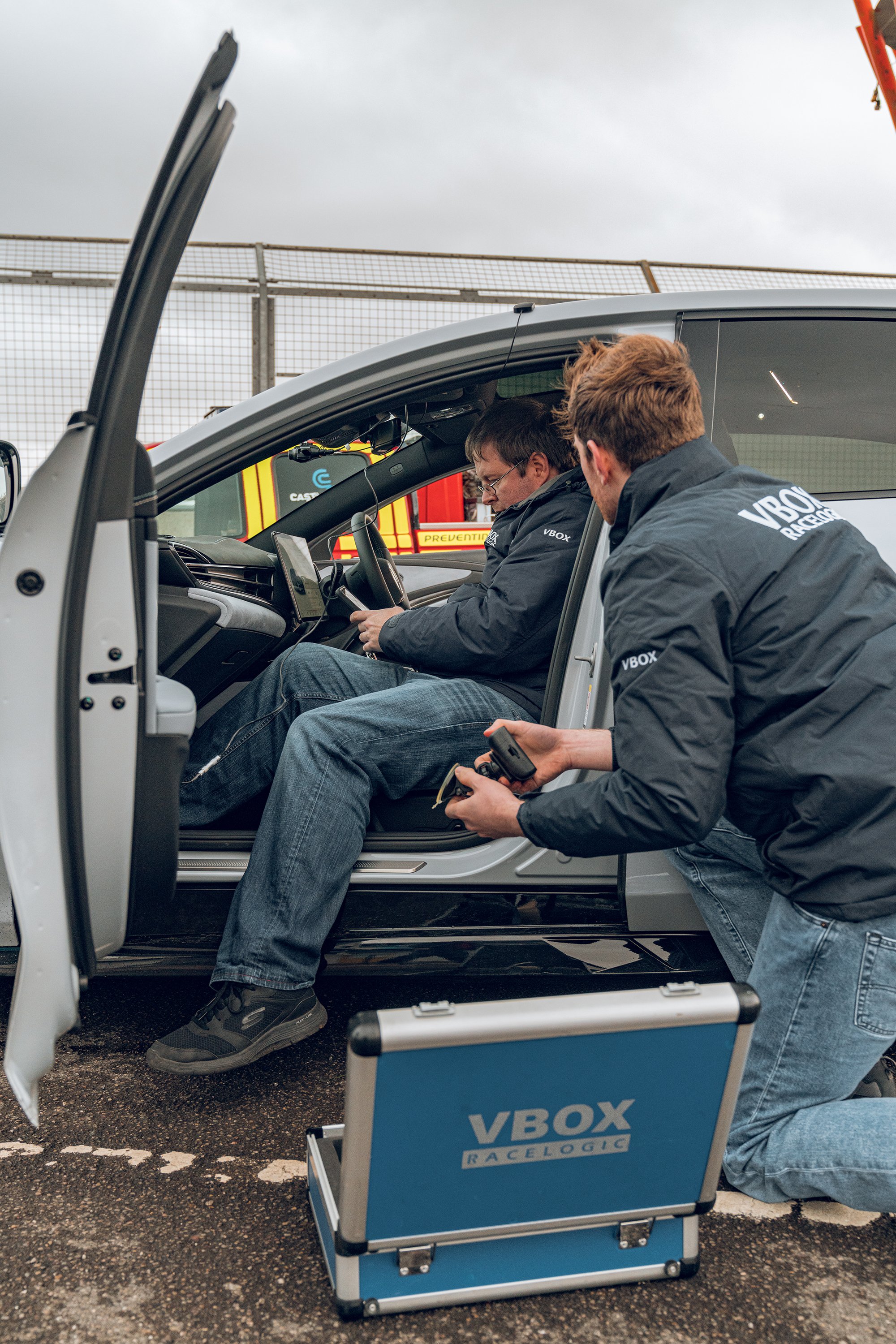
Racelogic fit timing gear
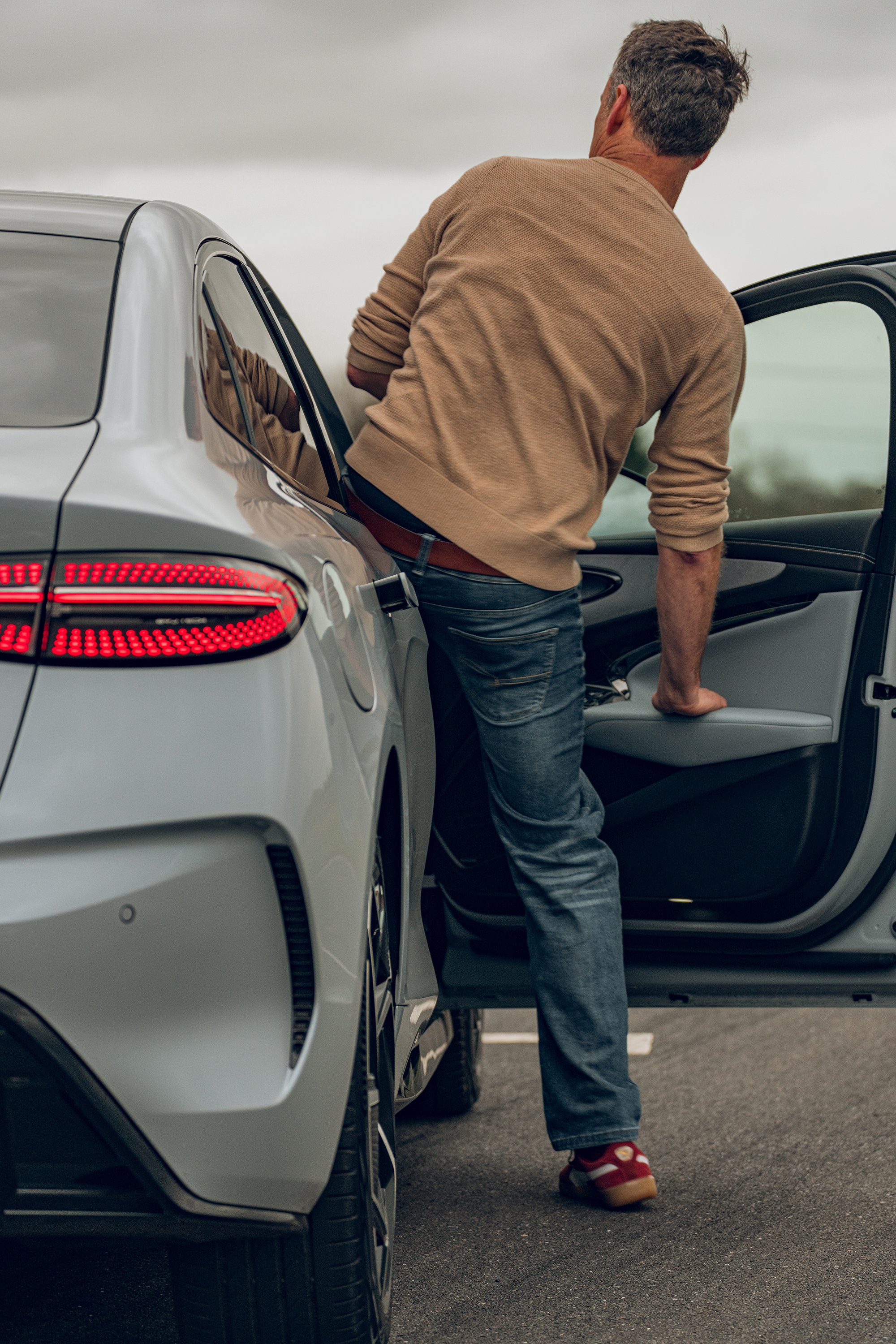
Time for sighting laps
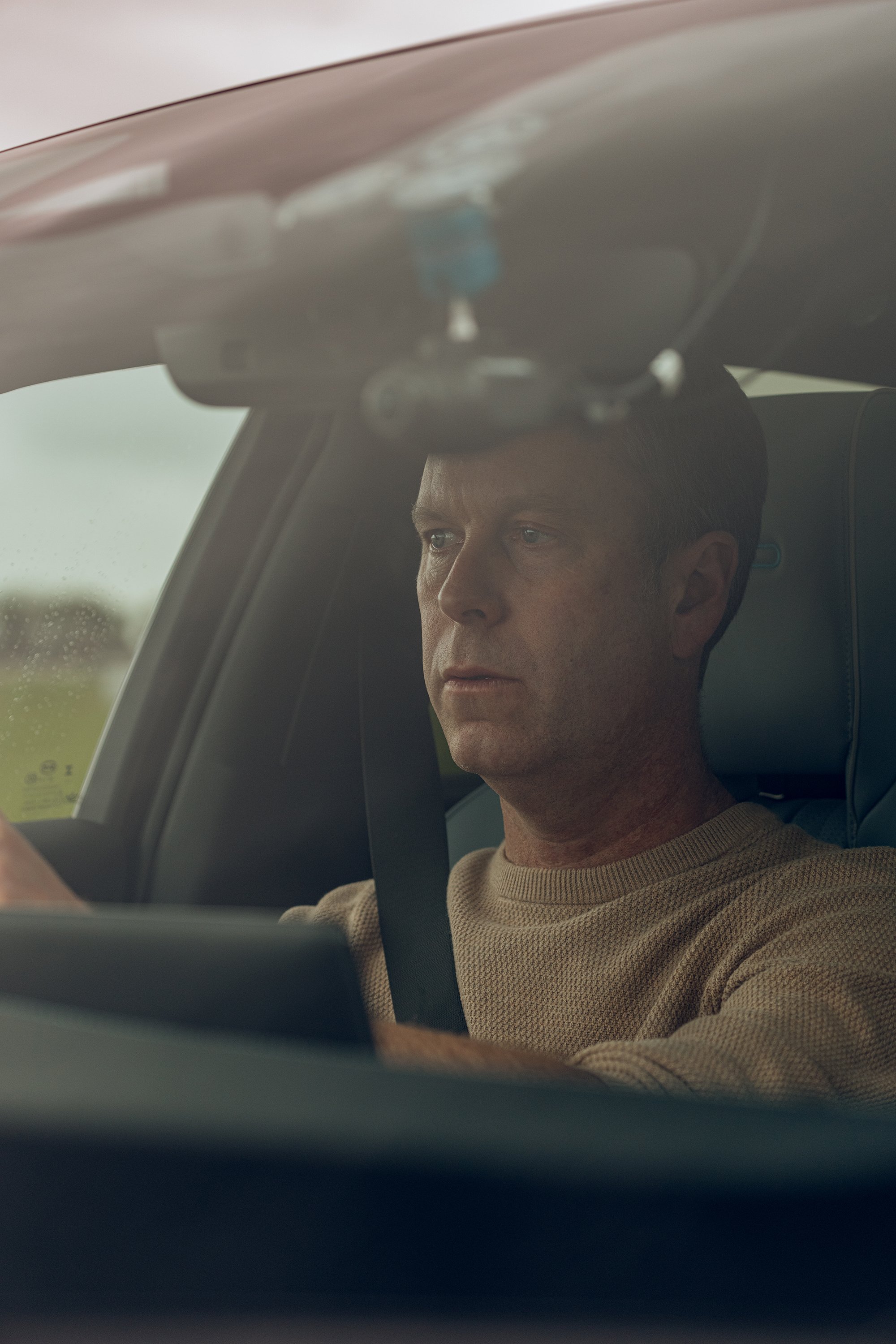
Serious concentration required
Racing-driver excuses logged with race control – our eco-spec tyres have a low rolling resistance for maximising range, not lateral g; conditions are damp; top speed is electronically capped at 112mph – it’s time to get the HANS head restraint and safety helmet on.
time for some 0-62mph runs
First up, a few cracks at our Excellence AWD’s 3.8sec 0-62mph time to warm up, with Racelogic on hand. Unlike some cars, there is no nuance to this bit – engage Sport, toggle the driver display to the launch screen with timer, and mash the throttle. There’s no tyre chirrup or scrabble, just a small pause followed by the kind of silent, stomach-churning surge I last experienced on the Revolution rollercoaster at Blackpool Pleasure Beach.
On the first two runs the Seal’s dash display calculates we’ve beaten the official figure with a 3.7sec run… and both times the GPS-based Racelogic kit begs to differ, if only by a little. Experts Rob and Oli clock a best of 3.93sec before we take a pitstop ahead of the main event.
My hot laps against the clock consist of an out lap, three hot laps as fast as I can pedal, then a cool-down lap before returning to the pits.
Castle Combe’s 1.85-mile layout is much the same today as it was seven decades ago, the key difference being two chicanes – the Esses and Bobbies – introduced in 1998 to slow speeds around the fast and flowing former airfield perimeter road. But this remains a rapid place, with speed compounded by limited run-off, camber that drops away to prompt unplanned off-road adventures, not to mention some tricky bumps to unsettle the Seal in all the wrong places. And just as I strike out, a fresh downpour bursts from nowhere, making it a race against time to get the laps in as the Seal’s wipers battle to clear the windscreen.
THE TYRES AND TRACK WARM UP
During the first of my three hot laps I’m perhaps over cautious as I feel out the grip and get those eco tyres to temperature, but the rain subsides part-way through the second lap. The data says I’m up on the last lap by a few tenths, but the track’s palpably improving – the tyres are biting nicely, I’m turning harder, leaving the braking a fraction later, getting back on the throttle a little sooner.
It means everything rests on a big push for that final third lap. I brake relatively late and try to neatly clip the apex on the last (Camp) corner before flattening the throttle – and corner speed is particularly crucial here because there’s such a long flat-out run over the start/finish line, through the kink at Folly down to Avon Rise. So any speed lost at Camp’s apex is compounded for a huge chunk of this relatively short lap.
castle combe: OUR track guide
-
Easy flat-out, just don’t get sucked into turning in too early!
-
Blind entry over the ‘rise’ beyond 100mph, into heavy braking zone. Don’t brake when the car is light and turning on the crest. Let it settle first, then mash the anchors.
-
Even on a damp lap, the all-wheel drive system helps post a peak lateral g of 0.909
-
Momentum is crucial for the exit so I carry 48.3mph but I daren’t run too wide or I’ll compromise my line for the next flat-out section.
-
Easy flat but make sure the car’s straight for the heavy braking zone into late-apex Tower – the track falls away and there’s very little run-off if you mess up.
-
Big pump of the brakes into Tower but it’s still a fast corner close to 60mph
-
Tighter entry than The Esses, and the slowest part of the circuit at 48.1mph. It’s no problem to let the car run wide on the exit kerbing.
-
Very gentle, fast right – keep it tucked right in to shorten the lap.
-
Crucial for speed all the way to Avon Rise. Brake late but don’t unsettle the car too much or you’ll scrub speed and lose momentum.
that blind
approach to Avon Rise is scarY – I HOME IN ON IT AT 108MPH, ALMOST THE SEAL’S V-MAX
Past the start-finish line, the time to beat is 1min 32.55sec. The kink feels ridiculously rapid, and while speed builds at a much more measured rate once you’re past 85mph or so, that blind approach to Avon Rise is the scariest part of the lap – I home in on it at 108.25mph, a smidgen off the car’s v-max.
Instinct says to brake on the crest of Avon Rise while turning left, but I fight the urge knowing the Seal’s temporarily lightened rear end would be at the mercy of physics. Instead I take the sting out of it by lifting the throttle just beforehand, then straightening the steering with a diagonal run from the left to the right of the track. Even then, the Seal’s body control gets tested here like nowhere else on the lap as it rocks about dramatically before I mash the brakes for Quarry with the car straight and settled.
A few seconds ago the Racelogic timer on my windscreen said the time was an improvement over the previous lap, but frustratingly I’ve braked earlier than before (perhaps spooked by the extra speed I’d carried) and squandered the few tenths made. At least I’m finding my rhythm at a circuit that’s new to me, and for a big, relatively soft saloon on eco tyres, the understeer I’m expecting doesn’t actually materialise – no doubt the Seal’s relative lack of (engine) weight over its nose encourages it to bite in smartly and hold its line.
A little patience, then I lean into the throttle. Again it’s a surprise the Seal doesn’t wash out wide at the apex, but the iTAC system is clearly working its magic, tucking the Seal into the corner the harder I accelerate. In fact, a 49.2mph minimum through Quarry contributes to peak lateral g of 0.909g on this damp lap.
Hammerdown lives up to its name
Green lights illuminate on the dash-mounted VBOX, telling me the time’s recovered – in fact I’m half a second up by the end of sector two on Farm Straight. This short run into the first chicane plays to the Seal’s strengths as it zips from B-road to beyond motorway speeds at 82.8mph, then it’s back onto brakes that drone in protest and trigger the hazard warning lights but do the job. I balance the Seal as best I can, desperately trying to keep momentum through the Esses because once again the next section is – you guessed it – really, really fast.
The crux of it is Hammerdown, which bends to the left like a boomerang before another heavy braking zone into Tower. The peril feels comparable to Avon Rise – I’m too focused to actually look – but this is the first time I’ve come straight off the Seal’s throttle at very high speed and immediately stamped on the brakes.
The Seal’s relative lack of weight
over the nose encourages it to bite into corners and hold its line well
Brake lights got plenty of use on track
Verified by independent experts
A front-engined saloon would squirm on its nose given similar treatment, but the Seal is much more neutral – thank the battery being positioned between the axles for that – giving me impressive control as I dive in for the late apex, mindful of the bump that can kick you out to wet, grassy run-off the size of a balcony. Minimum speed stays up at 57mph for a solid exit.
pushing for the line
Another short run into the second chicane – Bobbies – and soon I’m doing the full Ski Sunday, lifting the throttle to make the Seal shimmy right to left, keeping momentum up through what’s fractionally the slowest part of my lap, but a section that also links to a longer, faster section than Quarry or the Esses – the two other slow bits of the circuit.
By now I’m almost a second up on my previous best lap, and this last section is an easy flat-out, curve-hugging dash up to 91.9mph before I’m once again eyeing up that final fast if deceptively tight right-hander to finish the lap with a triumphant flourish. Apex clipped at 64mph, I swoop towards the pit wall as my mechanics and team principal run cheering for the wall – well, CAR’s Phil McNamara does – and I glance down to see it’s 1min 31.00sec on the nose, fully 1.55sec up, assisted in part by the fast-drying track.
Weather and the Seal’s self-preservation instincts mean I never go faster than that. But for now, as far as series-production EVs are concerned on this Wiltshire racetrack, the BYD Seal and I are kings of the castle.
Thanks to Adrian Flux, one of the UK’s largest specialist motor insurance brokers, for insuring the Seal with its bespoke trackday cover
corner speed is crucial here because next is a long, flat-out run through folly to avon rise
FACTS & FIGURES:
BYD SEAL EXCELLENCE AWD
What’s the line up?
BYD’s philosophy is to keep ranges simple to make life easy for customers. So the SEAL comes with a single battery choice (82. 5kWh) and standard 150kW max charging on DC public chargers. The entry-level car is the SEAL Design, with a 230kW motor driving the rear wheels good for 0-62mph in 5.9sec. It costs £45,695, rolls on 19-inch alloys and comes with pretty much everything: standard leather upholstery, a glass roof panel, heated front seats, a heat pump, safety kit galore and lots more. Upgrading to the Excellence AWD brings chassis changes: a front motor boosting total power to 390kW, the iTAC all-wheel drive torque management system and adaptive damping. List price is £48,695.
Data
Price £48,695
Powertrain 82.5kWh (gross), twin e-motors, all-wheel drive
Performance 390kW (523bhp), 494lb ft, 3.8sec 0-62mph, 112mph
Weight 2185kg
Efficiency 3.9 miles per kWh, 3.41 miles per kWh, 323-mile range, 0g/km CO2 (in use)
Length/width/height 4800/1875/1460mm
Boot capacity 400 litres (rear), 53 litres (nose)






